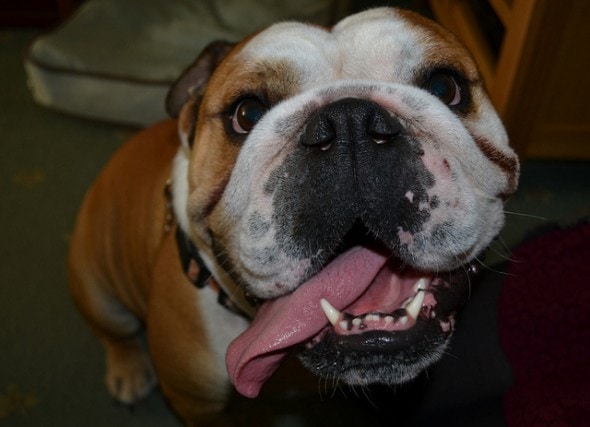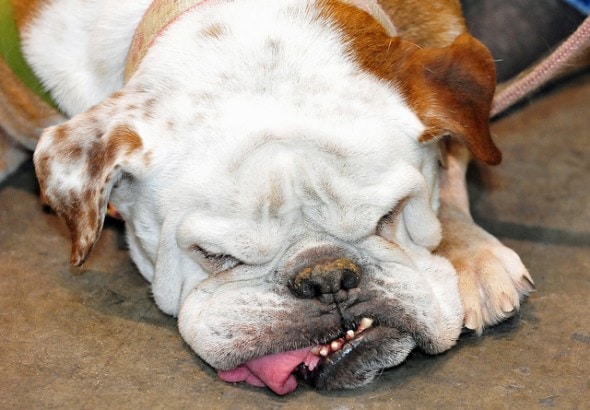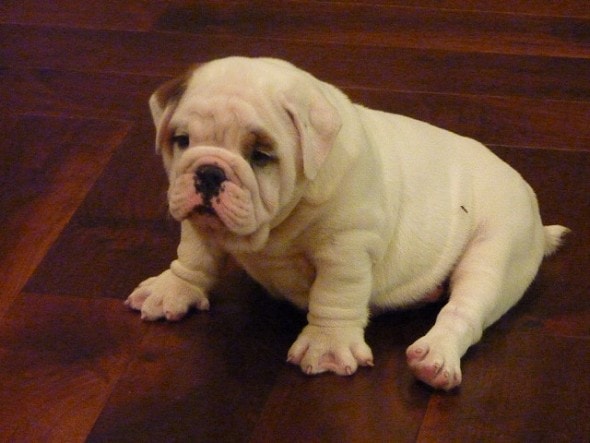
……………………………………………………………………..
A beloved breed may be a victim of its own popularity according to researchers from the University of California, Davis.
A recent report in the Canine Genetics and Epidemiology journal (A Genetic Assessment of the English Bulldog) suggests that the future of the English Bulldog could be at risk, as too much inbreeding has left these lovable, amiable dogs without the necessary genetic diversity to make future generations of pups robust and healthy.
“The English Bulldog truly is a breed in trouble,” they report. “Inbreeding … has brought the breed to a crisis point.”

……………………………………………………………………..
Those familiar with the breed may not be surprised. They are prone to a host of health problems including hip dysplasia, cherry eye, allergies, heart problems and other concerns. This, over decades of selective breeding to make prominent traits that are perhaps endearing, but not necessarily ideal.
“There are a whole litany of different problems associated with their structure and inbreeding. We were not surprised to find they did lack genetic diversity,” said Niels Pedersen, the study’s lead author, to CBS News. Pedersen is a distinguished professor emeritus at UC Davis School of Veterinary Medicine’s Center for Companion Animal Health.
“The objective,” reads the study, “was to assess whether the breed retains enough genetic diversity to correct the genotypic and phenotypic abnormalities associated with poor health, to allow for the elimination of deleterious recessive mutations, or to make further phenotypic changes in body structure or coat.
More than 100 registered English Bulldogs used for breeding based on maternal and paternal haplotypes were assessed in the study, along with 37 others — those with health problems also linked to the aforementioned hundred — for the purposes of comparison. This was “based on the perception that sickly English bulldogs are products of commercial breeders or puppy-mills and genetically different and inferior.”
Researchers found that the dog’s genome has been significantly changed over hundreds of years of breeding that has been mostly appearance-focused. Much of the change has occurred within the last 20 years, Pedersen said, as the dogs have been bred for stockier builds and shorter snouts, with little attention paid to make changes that would help minimize the breed’s health issues.
“The furrows in their skin can get moisture in them and get infected,” Pedersen explained. Their skeletons, too, have been modified over time; spine ruptures and hip and elbow dysplasia are common. Many English bulldogs, says Pedersen, are essentially “deformed.”
“Changes in their skeletal structures and their breathing problems have made it difficult for them to breed normally and give birth normally,” said Pedersen, explaining that many require C-sections. “You start to see the whole viability of the breed to collapse.”
The English bulldog is the nation’s fourth most popular breed and yet the lifespan, particularly in purebreds, is short.

……………………………………………………………………..
“It’s about six years overall. A bulldog puppy — if it’s having a lot of health problems by age one, that it will probably only live four-and-a-half to five years. If it remains healthy in the first year of life, it can live to be as long as eight years,” Pedersen said.
By comparison, a mutt that weighs about 30 pounds can easily live 15 to 17 years, he said.
The debate between some breeders on one hand and vets and animal rights activists on the other is ongoing; the latter believe mixing the gene pool with other dogs will ultimately make the English bulldog healthier and more viable, the former feeling strongly that this will ruin the breed.
Pedersen falls squarely within the vet/activist group.
“Just because they’re great apartment dogs — affectionate … you can’t just breed them because they’re popular. That’s no excuse for allowing them to be unhealthy, and that’s where it is right now,” he said.
